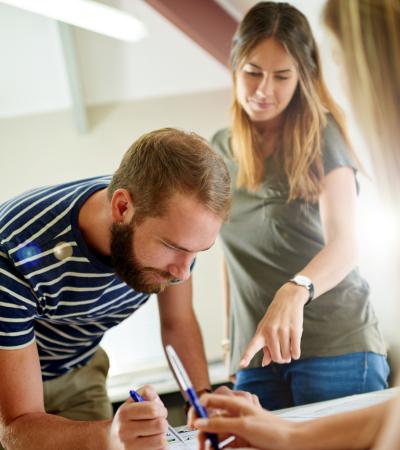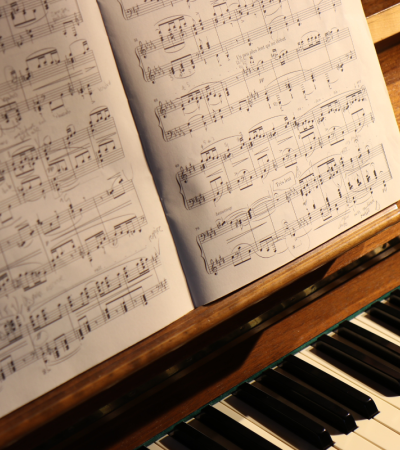Libraries of all types are taking on new roles and responsibilities. Through robust programming agendas, they’re at the center of community-building efforts all across the United States.

As part of the National Impact of Library Public Programs Assessment (NILPPA), Knology sat down with advisors from across the library sector to discuss the impacts libraries aim to have on the communities they serve. During these discussions, we also brainstormed ways to track these impacts across various domains of community life. Two important ideas emerged from our conversations:
- Impact Domains
Specific areas where library programs can make meaningful differences in people’s lives. We defined nine of these. Libraries can help create: (1) connected communities; (2) knowledgeable communities; (3) creative communities; (4) civically engaged communities; (5) healthy communities; (6) economically vital communities; (7) welcoming communities; (8) joyful communities; (9) caring communities.
- Indicators
Ways of measuring the real-world impact of library programming. These Indicators allow us to determine whether or not programs are having their intended effects.
In this series of blog posts, we’d like to talk about each of these impact domains individually, and talk about how libraries are contributing to each of them. In this post, we focus on joyful communities.
What are Joyful Communities?
Joy is one of the most basic and profound of all human emotions. It refers to feelings of happiness, delight, and elation, and can be experienced in connection with both the simple pleasures of life or as a deeper, abiding sense of contentment and fulfillment. On a collective level, joy is associated with feelings of community spirit and pride. A joyful community is one that enables its members to experience all of these different forms of joy. More specifically, joyful communities create spaces where people can come together to have fun, be entertained, enjoy each other’s company, celebrate one another’s lives, and affirm both their histories and the futures they are making together. Libraries can help build joyful communities by creating programs that meet patrons’ needs for entertainment, amusement, and diversion, and that build a sense of place attachment and pride within the community.
Example: Affirming Community History at the Charles Whitehead Public Library
Many library programs focus on fun experiences to bring joy to individuals attending. However, as noted above, programming can also promote communal joy, a sense of belonging and place in the community as a whole. The following example demonstrates this.
After hearing from community members, staff at the Charles Whitehead Public Library in Wewahitchka, Florida, launched a public history project called Remembering Wewahitchka. In support of this, the library hosted a variety of events and programs. An archaeologist gave a talk on culturally significant Native American Indian mounds in the area, while a nationally recognized playwright born in the area gave the library permission to screen a film about Black turpentine workers based on his grandfather’s experiences. A local donor provided funds for a one-year subscription to Ancestry.com, and the Mormon Church provided free tutorials on use of the FamilySearch database. The Florida State archives showcased local historical documents within the library, while also providing behind-the-scenes tours to patrons. Along with this, the University of Florida secured funds for digitizing the town’s local newspaper, and began archiving this as part of the Florida Digital Newspapers Library.
Working on the Remembering Wewahitchka project filled library staff with a deep sense of “accomplishment and pride.” Noting that the inhabitants of their rural community have long been “stereotyped and misunderstood,” staff observed that the project “helped the local people feel like they matter, that their story matters.” It also gave library staff “a very clear sense of purpose” about what they could do to support and honor the “small renaissance of pride and community spirit” their efforts sparked. Among other things, the project inspired an attempt to preserve the town’s old courthouse.
How Can You Help Build a Joyful Community?
A program doesn't have to be elaborate or painstakingly planned to bring joy into the lives of community members. Simply by providing enjoyable experiences, library programs can contribute to the goal of joyful communities — even when not explicitly designed to have a community-level impact. A few examples include:
- Story times, book clubs, and other programs designed to make reading a pleasurable experience
- Game nights, scavenger hunts, and other opportunities for patrons of any age to play
- Holiday or cultural celebrations
Let’s Put it To Work!
We’re interested in learning more about how you think libraries can create joyful communities. How do programs at your library spread joy within your community? What partnerships do you have that help you meet this goal? And how else might libraries help the communities they serve become more joyful?
Let us know what you think about these things. You can either comment below or email programminglibrarian@ala.org. And for more information on this topic, please consult the literature cited below.
Additional Resources
Stebbins, R. A. (2009). Leisure and its relationship to library and information science: bridging the gap. Library trends, 57(4), 618-631.
Scannell, L., & Gifford, R. (2017). The experienced psychological benefits of place attachment. Journal of Environmental Psychology, 51, 256–269. https://doi.org/10.1016/j.jenvp.2017.04.001
Bengry, J., Bevan, R., & Morrice, R. (2016). Pride of Place: A Guide to Understanding and Protecting Lesbian, Gay, Bisexual, Transgender and Queer (LGBTQ) Heritage. Historic England. https://historicengland.org.uk/images-books/publications/pride-of-place…
Stephens, M., & Ledden, S. [LACONI Library Events]. (2023, April 20). Finding Joy: Library as Space for Playful Learning and Creativity. [Video]. YouTube. https://www.youtube.com/watch?v=nEoHIdu6qTk
These materials were produced for National Impact of Library Public Programs Assessment (NILPPA), a project funded by the Institute of Museum and Library Services. The authors are solely responsible for the content on this page.
Written by Knology. This blog has been co-posted on Programming Librarian, NILPPA and the Knology website.
Knology is a nonprofit research organization that produces practical social science for a better world. The organization pursues this goal to help professionals in a variety of sectors build inclusive, informed, and cooperative societies that can thrive together with the natural systems on which we all depend. As a transdisciplinary collective of over 30 social scientists, writers and educators, the organization's work process is built on equity, transparency and deliberation.



